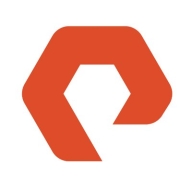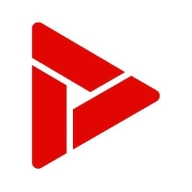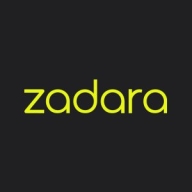


Zadara and Pavilion HyperParallel Flash Array are two notable products in the data storage arena. Pavilion HyperParallel Flash Array stands out due to its advanced features, which users feel justify the higher price.
Features: Zadara's user reviews highlight robust security, scalability, and simplified management. Pavilion HyperParallel Flash Array is praised for its high performance, low latency, and advanced analytics capabilities.
Room for Improvement: Users suggest improvements for Zadara around its interface's responsiveness and broader integrations with third-party applications. Pavilion HyperParallel Flash Array users seek enhancements in technical support responsiveness and more detailed documentation.
Ease of Deployment and Customer Service: User reviews report that Zadara's deployment process is straightforward and well-supported by their customer service. Pavilion HyperParallel Flash Array's deployment is also user-friendly, but users find its customer service needs better responsiveness.
Pricing and ROI: Zadara is seen as cost-effective with favorable setup costs and a good ROI based on user feedback. Pavilion HyperParallel Flash Array, while more expensive, is considered worth the investment for its advanced features, though its high initial cost impacts ROI perception.
| Product | Market Share (%) |
|---|---|
| Pure FlashArray X NVMe | 1.0% |
| Zadara | 0.3% |
| Pavilion HyperParallel Flash Array | 0.3% |
| Other | 98.4% |


| Company Size | Count |
|---|---|
| Small Business | 15 |
| Midsize Enterprise | 11 |
| Large Enterprise | 12 |
| Company Size | Count |
|---|---|
| Small Business | 12 |
| Large Enterprise | 3 |
Pure Storage FlashArray//X is the world’s first enterprise-class, all-NVMe flash storage array. It represents a new class of storage – shared accelerated storage, which is a term coined by Gartner – that delivers major breakthroughs in performance, simplicity, and consolidation.
Pavilion HyperParallel Data Platform
The Pavilion HyperParallel Data Platform™ dramatically accelerates what organizations achieve by delivering universally unmatched storage performance, in an incredibly compact solution while reducing data center costs and complexity. Unrivaled flexibility for multiple data types and protocols, along with broad ecosystem integration, ensure that every customer has choice and control.
What is the Pavilion HyperParallel Data Platform
The Pavilion HyperParallel Data Platform is comprised of the Pavilion HyperParallel Flash Array™ and Pavilion HyperOS™. The Pavilion HyperParallel Flash Array leverages a unique, switch-based architecture to create a multi-controller solution that delivers an unmatched combination of high performance, ultra-low latency, and storage density. Pavilion HyperOS is a powerful, purpose-built storage operating system designed to unlock the power of the multi-controller Pavilion HyperParallel Flash Array, which delivers scalability and flexibility that no other solution can offer.
Pavilion HyperParallel Data Platform Data Sheet
Download the Pavilion HyperParallel Data Platform data sheet. Updated: December 2020
Zadara is a powerful enterprise-level storage solution whose design enables it to handle every aspect of a user’s data storage needs. It can be deployed in any location, using any protocol, and storing any data type that an organization requires. With Zadara, organizations can do everything that they were able to do with more traditional systems in a cheaper and more efficient way.
Zadara Benefits
Some of the ways that organizations can benefit by choosing to deploy Zadara include:
Zadara Features
File analytics. Organizations can leverage a powerful analytics package that can provide them with critical insights. These tools can help users sort through their data and make more informed data management decisions.
Reviews from Real Users
Zadara is a highly effective solution that stands out when compared to many of its competitors. Two major advantages it offers are its extensive suite of cloud solution integrations and its object storage capability.
Steve H., the chief technology officer at Pratum, writes, “One of the most valuable features is its integration with other cloud solutions. We have a presence within Amazon EC2 and we leverage computer instances there. Being able to integrate with computing, both locally within Zadara, as well as with other cloud vendors such as Amazon, is very helpful, while also being able to maintain extremely low latency between those connections.”
Mauro R., the CEO of Momit SRL, says, “The object storage feature is wonderful. With traditional storage, you have a cost per gigabyte that is extremely high or related to the number of disks. With Zadara Storage Cloud, you have a cost per gigabyte that you can cut and tailor to your needs independent of the number or size of the disks.”
We monitor all All-Flash Storage reviews to prevent fraudulent reviews and keep review quality high. We do not post reviews by company employees or direct competitors. We validate each review for authenticity via cross-reference with LinkedIn, and personal follow-up with the reviewer when necessary.